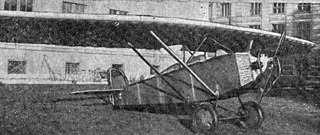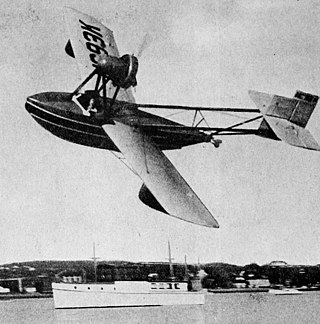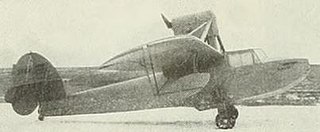
The Latécoère 23 was a development of the Latécoère 21 flying boat, a twin-engined parasol winged aircraft. Only one was built, flying and crashing in late 1927. The similar Latécoère 32 was its immediate successor.
The Latécoère 340 was a three-engined, parasol winged flying boat designed in 1929 in France for middle-distance, overseas routes. The sole prototype was destroyed early in the testing programme, and no more were built.
The Latécoère 24 was a French three-engined parasol winged flying boat, built in 1927 to test the longer stretches of the South Atlantic crossing. Trials showed that it was overweight and consequently performed below specification.

The Zeppelin-Lindau Rs.II was a biplane flying boat, designed by Claudius Dornier as a follow-on to his Zeppelin-Lindau Rs.I and built during 1914–1915 on the German side of Lake Constance. Initially this aircraft was powered by three engines mounted inside the hull driving three pusher propellers via gearboxes and shafts. The later version was powered by four engines in two push-pull nacelles mounted between the wings.

The Albatros L.71 was a two-seat, single pusher engined biplane built in Germany in the 1920s.
The ViS Sprint is a pusher configuration, pod-and-boom two-seat ultralight, designed and built in the Ukraine in the mid-2000s. It can serve as an agricultural spraying aircraft.
The Fizir AF-2, Fizir 85 CV or Fizir-Vega was a two-seat amphibian intended for touring, sport and training.

The Caproni Ca.95 was a large, three engine, long range, heavy bomber prototype built in Italy in 1929. It could carry a 1,600 kg (3,500 lb) bomb load and had three defensive gun positions. Only one was built.
The Aviad Zigolo MG12 is an Italian kitbuilt introductory motor-glider first flown in 2012. It has a small engine and limited gliding performance but is inexpensive to buy and run and simple to build and fly. Kit production began in 2013 and by the following year twenty had been sold.

The Dornier Do S was a 22-passenger flying boat airliner flown in Germany in 1930.

The CAMS 54 was a strengthened and more powerful version of the French CAMS 51 civil transport and naval reconnaissance flying boat, developed for transatlantic flights. It is sometimes referred to as the 54 GR.
The Cañete Pirata, also known as Hidro Antonio Cañete de Reconocimiento (HACR), was a Spanish military parasol wing, single-engined flying boat flown in the late 1920s. Only one was built.

The Rogalski and Wigura R.W.1 was designed and built by a pair of students at Warsaw Technical University in 1927. The single example was a two-seat parasol-wing monoplane which entered two national competitions, served the Warsaw Academic Aeroclub and also towed an advertising banner.
The Nordflug FB 1 was a small, parasol wing flying boat with two seats in tandem, sponsons for stability on the water and a low-powered, wing mounted engine.
The LFG V 8 Bärbel (Barbel) in English) was a small, single-engined, biplane flying boat which carried two passengers. The sole example was built in Germany shortly after World War I but was exported and used for Baltic flights.
The LFV V 18 Sassnitz was a German flying boat able to hold up to eight passengers. Only one is known to have flown.

The Zeppelin-Lindau Gs.I, often known post-WWI as the Dornier Gs.I after its designer Claude Dornier, was a civil flying boat developed immediate post-war from a military prototype. Its passenger cabin seated six. Only one was completed, and that was eventually scuttled to keep it out of Allied hands. Another of the military prototypes was intended to have a bigger, nine seat cabin and other refinements but the Gs.II was incomplete when discovered by Allied inspectors.

The Ireland Privateer was a 1930s American two-seat, single pusher-engined monoplane sports flying boat which could be equipped as an amphibian. About 18 were built.

The Ireland Neptune was a four or five place pusher configuration biplane sold in flying boat and amphibian versions. Designed in the U.S. and first flown in 1927, well over 50 were built.

The Argonaut Pirate was a 1930s, U.S., three place, single-engined pusher configuration amphibious aircraft. Only two were built.











